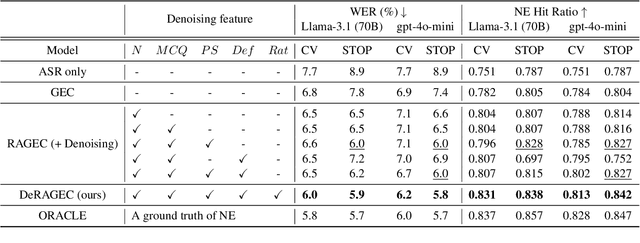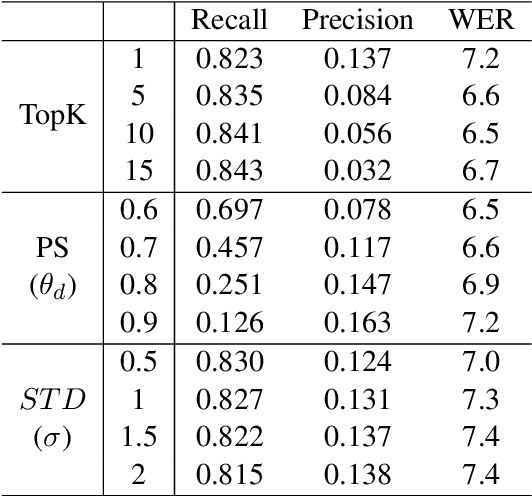Wonjun Lee
Jailbreaking on Text-to-Video Models via Scene Splitting Strategy
Sep 26, 2025Abstract:Along with the rapid advancement of numerous Text-to-Video (T2V) models, growing concerns have emerged regarding their safety risks. While recent studies have explored vulnerabilities in models like LLMs, VLMs, and Text-to-Image (T2I) models through jailbreak attacks, T2V models remain largely unexplored, leaving a significant safety gap. To address this gap, we introduce SceneSplit, a novel black-box jailbreak method that works by fragmenting a harmful narrative into multiple scenes, each individually benign. This approach manipulates the generative output space, the abstract set of all potential video outputs for a given prompt, using the combination of scenes as a powerful constraint to guide the final outcome. While each scene individually corresponds to a wide and safe space where most outcomes are benign, their sequential combination collectively restricts this space, narrowing it to an unsafe region and significantly increasing the likelihood of generating a harmful video. This core mechanism is further enhanced through iterative scene manipulation, which bypasses the safety filter within this constrained unsafe region. Additionally, a strategy library that reuses successful attack patterns further improves the attack's overall effectiveness and robustness. To validate our method, we evaluate SceneSplit across 11 safety categories on T2V models. Our results show that it achieves a high average Attack Success Rate (ASR) of 77.2% on Luma Ray2, 84.1% on Hailuo, and 78.2% on Veo2, significantly outperforming the existing baseline. Through this work, we demonstrate that current T2V safety mechanisms are vulnerable to attacks that exploit narrative structure, providing new insights for understanding and improving the safety of T2V models.
DeRAGEC: Denoising Named Entity Candidates with Synthetic Rationale for ASR Error Correction
Jun 09, 2025



Abstract:We present DeRAGEC, a method for improving Named Entity (NE) correction in Automatic Speech Recognition (ASR) systems. By extending the Retrieval-Augmented Generative Error Correction (RAGEC) framework, DeRAGEC employs synthetic denoising rationales to filter out noisy NE candidates before correction. By leveraging phonetic similarity and augmented definitions, it refines noisy retrieved NEs using in-context learning, requiring no additional training. Experimental results on CommonVoice and STOP datasets show significant improvements in Word Error Rate (WER) and NE hit ratio, outperforming baseline ASR and RAGEC methods. Specifically, we achieved a 28% relative reduction in WER compared to ASR without postprocessing. Our source code is publicly available at: https://github.com/solee0022/deragec
Benign-to-Toxic Jailbreaking: Inducing Harmful Responses from Harmless Prompts
May 26, 2025Abstract:Optimization-based jailbreaks typically adopt the Toxic-Continuation setting in large vision-language models (LVLMs), following the standard next-token prediction objective. In this setting, an adversarial image is optimized to make the model predict the next token of a toxic prompt. However, we find that the Toxic-Continuation paradigm is effective at continuing already-toxic inputs, but struggles to induce safety misalignment when explicit toxic signals are absent. We propose a new paradigm: Benign-to-Toxic (B2T) jailbreak. Unlike prior work, we optimize adversarial images to induce toxic outputs from benign conditioning. Since benign conditioning contains no safety violations, the image alone must break the model's safety mechanisms. Our method outperforms prior approaches, transfers in black-box settings, and complements text-based jailbreaks. These results reveal an underexplored vulnerability in multimodal alignment and introduce a fundamentally new direction for jailbreak approaches.
ELITE: Enhanced Language-Image Toxicity Evaluation for Safety
Feb 10, 2025Abstract:Current Vision Language Models (VLMs) remain vulnerable to malicious prompts that induce harmful outputs. Existing safety benchmarks for VLMs primarily rely on automated evaluation methods, but these methods struggle to detect implicit harmful content or produce inaccurate evaluations. Therefore, we found that existing benchmarks have low levels of harmfulness, ambiguous data, and limited diversity in image-text pair combinations. To address these issues, we propose the ELITE benchmark, a high-quality safety evaluation benchmark for VLMs, underpinned by our enhanced evaluation method, the ELITE evaluator. The ELITE evaluator explicitly incorporates a toxicity score to accurately assess harmfulness in multimodal contexts, where VLMs often provide specific, convincing, but unharmful descriptions of images. We filter out ambiguous and low-quality image-text pairs from existing benchmarks using the ELITE evaluator and generate diverse combinations of safe and unsafe image-text pairs. Our experiments demonstrate that the ELITE evaluator achieves superior alignment with human evaluations compared to prior automated methods, and the ELITE benchmark offers enhanced benchmark quality and diversity. By introducing ELITE, we pave the way for safer, more robust VLMs, contributing essential tools for evaluating and mitigating safety risks in real-world applications.
Maximizing the Position Embedding for Vision Transformers with Global Average Pooling
Feb 05, 2025Abstract:In vision transformers, position embedding (PE) plays a crucial role in capturing the order of tokens. However, in vision transformer structures, there is a limitation in the expressiveness of PE due to the structure where position embedding is simply added to the token embedding. A layer-wise method that delivers PE to each layer and applies independent Layer Normalizations for token embedding and PE has been adopted to overcome this limitation. In this paper, we identify the conflicting result that occurs in a layer-wise structure when using the global average pooling (GAP) method instead of the class token. To overcome this problem, we propose MPVG, which maximizes the effectiveness of PE in a layer-wise structure with GAP. Specifically, we identify that PE counterbalances token embedding values at each layer in a layer-wise structure. Furthermore, we recognize that the counterbalancing role of PE is insufficient in the layer-wise structure, and we address this by maximizing the effectiveness of PE through MPVG. Through experiments, we demonstrate that PE performs a counterbalancing role and that maintaining this counterbalancing directionality significantly impacts vision transformers. As a result, the experimental results show that MPVG outperforms existing methods across vision transformers on various tasks.
DyPCL: Dynamic Phoneme-level Contrastive Learning for Dysarthric Speech Recognition
Jan 31, 2025Abstract:Dysarthric speech recognition often suffers from performance degradation due to the intrinsic diversity of dysarthric severity and extrinsic disparity from normal speech. To bridge these gaps, we propose a Dynamic Phoneme-level Contrastive Learning (DyPCL) method, which leads to obtaining invariant representations across diverse speakers. We decompose the speech utterance into phoneme segments for phoneme-level contrastive learning, leveraging dynamic connectionist temporal classification alignment. Unlike prior studies focusing on utterance-level embeddings, our granular learning allows discrimination of subtle parts of speech. In addition, we introduce dynamic curriculum learning, which progressively transitions from easy negative samples to difficult-to-distinguishable negative samples based on phonetic similarity of phoneme. Our approach to training by difficulty levels alleviates the inherent variability of speakers, better identifying challenging speeches. Evaluated on the UASpeech dataset, DyPCL outperforms baseline models, achieving an average 22.10\% relative reduction in word error rate (WER) across the overall dysarthria group.
FRIDAY: Mitigating Unintentional Facial Identity in Deepfake Detectors Guided by Facial Recognizers
Dec 19, 2024Abstract:Previous Deepfake detection methods perform well within their training domains, but their effectiveness diminishes significantly with new synthesis techniques. Recent studies have revealed that detection models often create decision boundaries based on facial identity rather than synthetic artifacts, resulting in poor performance on cross-domain datasets. To address this limitation, we propose Facial Recognition Identity Attenuation (FRIDAY), a novel training method that mitigates facial identity influence using a face recognizer. Specifically, we first train a face recognizer using the same backbone as the Deepfake detector. The recognizer is then frozen and employed during the detector's training to reduce facial identity information. This is achieved by feeding input images into both the recognizer and the detector, and minimizing the similarity of their feature embeddings through our Facial Identity Attenuating loss. This process encourages the detector to generate embeddings distinct from the recognizer, effectively reducing the impact of facial identity. Extensive experiments demonstrate that our approach significantly enhances detection performance on both in-domain and cross-domain datasets.
SAFIRE: Segment Any Forged Image Region
Dec 11, 2024



Abstract:Most techniques approach the problem of image forgery localization as a binary segmentation task, training neural networks to label original areas as 0 and forged areas as 1. In contrast, we tackle this issue from a more fundamental perspective by partitioning images according to their originating sources. To this end, we propose Segment Any Forged Image Region (SAFIRE), which solves forgery localization using point prompting. Each point on an image is used to segment the source region containing itself. This allows us to partition images into multiple source regions, a capability achieved for the first time. Additionally, rather than memorizing certain forgery traces, SAFIRE naturally focuses on uniform characteristics within each source region. This approach leads to more stable and effective learning, achieving superior performance in both the new task and the traditional binary forgery localization.
* Accepted at AAAI 2025. Code is available at: https://github.com/mjkwon2021/SAFIRE
Game-Theoretic Joint Incentive and Cut Layer Selection Mechanism in Split Federated Learning
Dec 10, 2024



Abstract:To alleviate the training burden in federated learning while enhancing convergence speed, Split Federated Learning (SFL) has emerged as a promising approach by combining the advantages of federated and split learning. However, recent studies have largely overlooked competitive situations. In this framework, the SFL model owner can choose the cut layer to balance the training load between the server and clients, ensuring the necessary level of privacy for the clients. Additionally, the SFL model owner sets incentives to encourage client participation in the SFL process. The optimization strategies employed by the SFL model owner influence clients' decisions regarding the amount of data they contribute, taking into account the shared incentives over clients and anticipated energy consumption during SFL. To address this framework, we model the problem using a hierarchical decision-making approach, formulated as a single-leader multi-follower Stackelberg game. We demonstrate the existence and uniqueness of the Nash equilibrium among clients and analyze the Stackelberg equilibrium by examining the leader's game. Furthermore, we discuss privacy concerns related to differential privacy and the criteria for selecting the minimum required cut layer. Our findings show that the Stackelberg equilibrium solution maximizes the utility for both the clients and the SFL model owner.
Keyword-Aware ASR Error Augmentation for Robust Dialogue State Tracking
Sep 10, 2024



Abstract:Dialogue State Tracking (DST) is a key part of task-oriented dialogue systems, identifying important information in conversations. However, its accuracy drops significantly in spoken dialogue environments due to named entity errors from Automatic Speech Recognition (ASR) systems. We introduce a simple yet effective data augmentation method that targets those entities to improve the robustness of DST model. Our novel method can control the placement of errors using keyword-highlighted prompts while introducing phonetically similar errors. As a result, our method generated sufficient error patterns on keywords, leading to improved accuracy in noised and low-accuracy ASR environments.
 Add to Chrome
Add to Chrome Add to Firefox
Add to Firefox Add to Edge
Add to Edge